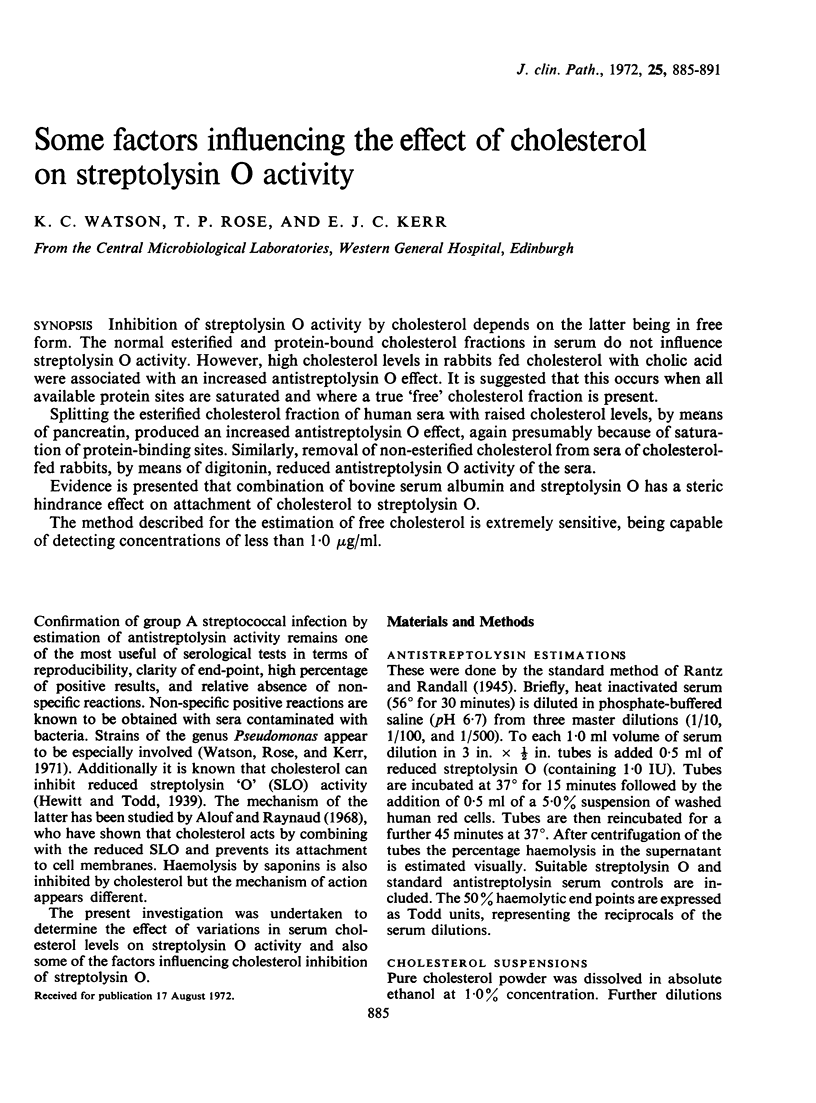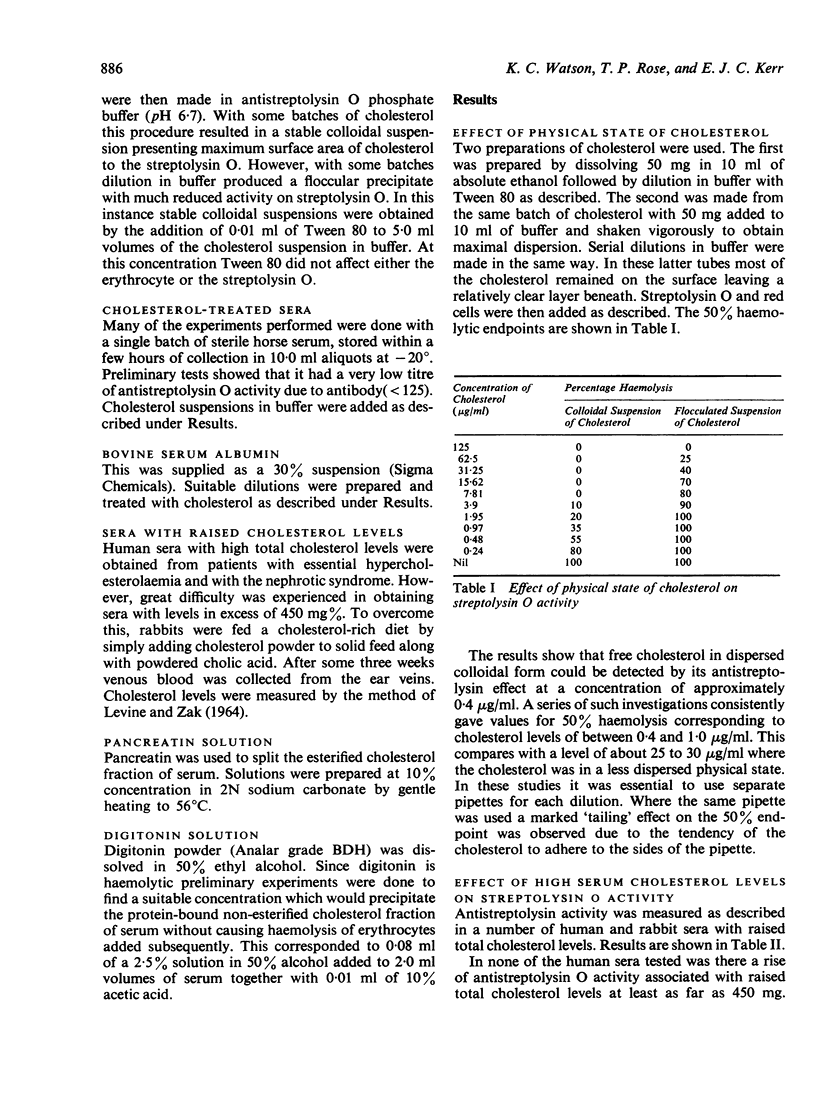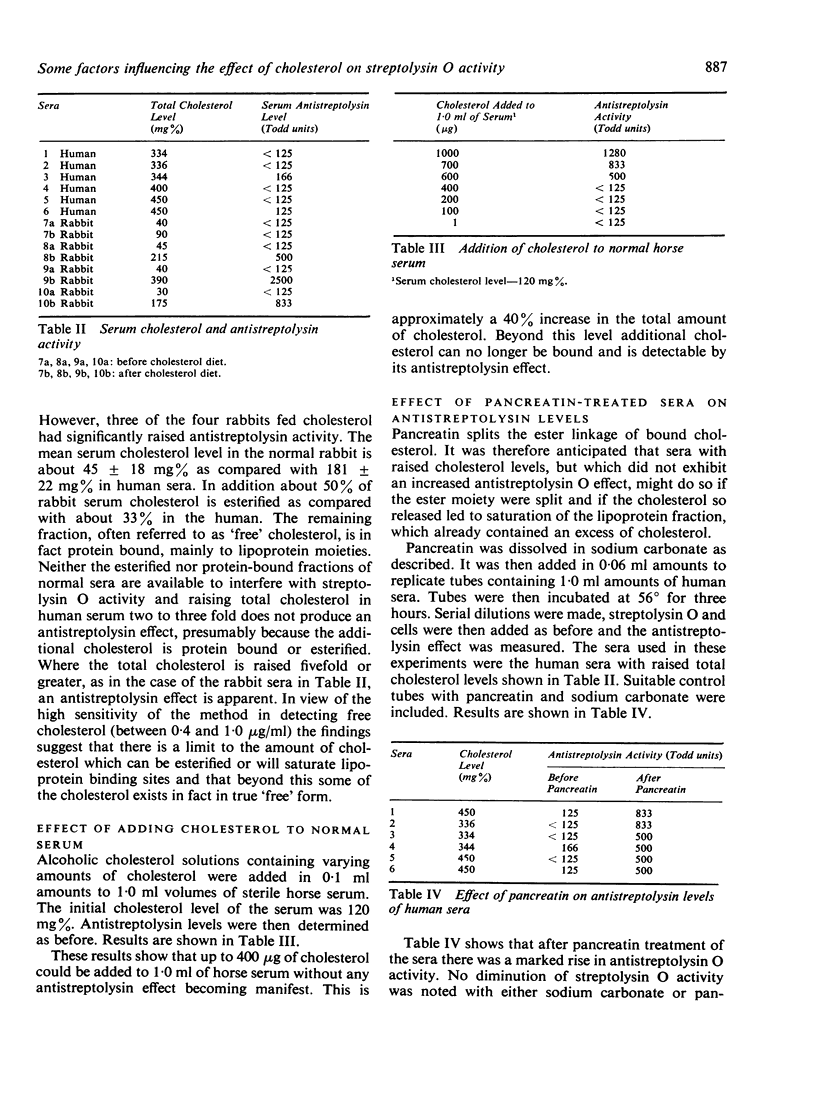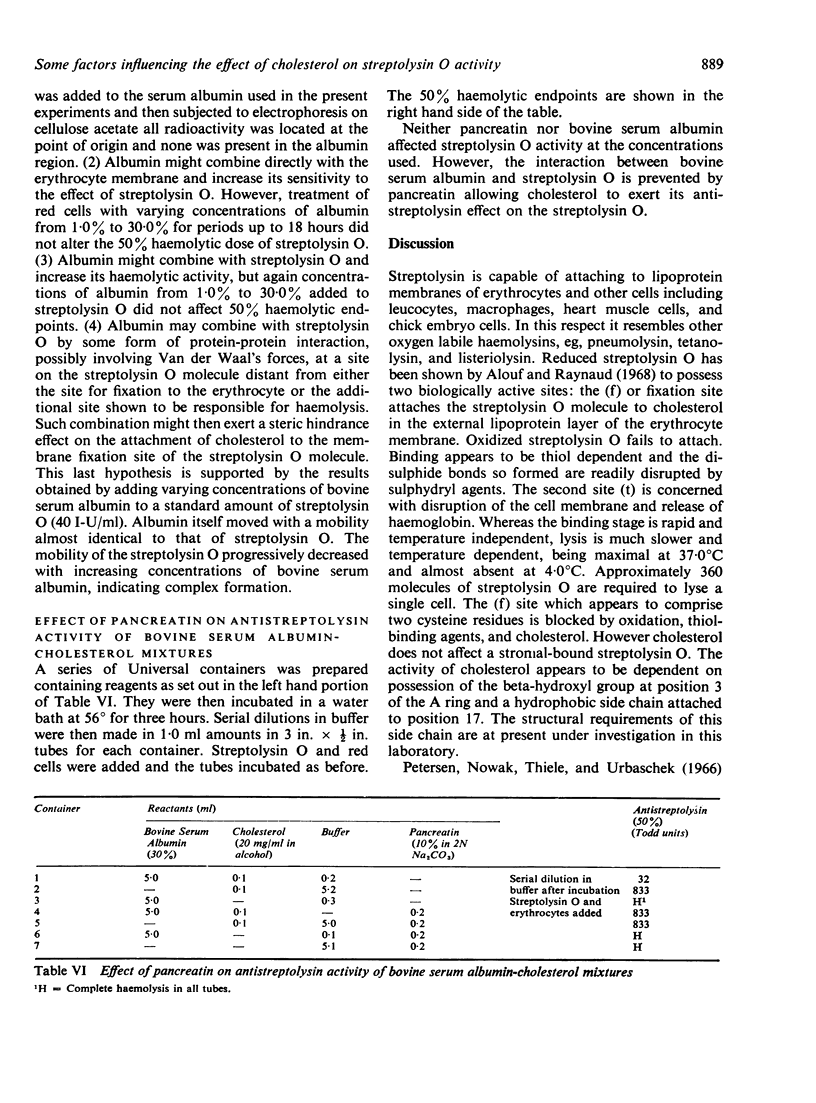Abstract
Inhibition of streptolysin O activity by cholesterol depends on the latter being in free form. The normal esterified and protein-bound cholesterol fractions in serum do not influence streptolysin O activity. However, high cholesterol levels in rabbits fed cholesterol with cholic acid were associated with an increased antistreptolysin O effect. It is suggested that this occurs when all available protein sites are saturated and where a true `free' cholesterol fraction is present.
Splitting the esterified cholesterol fraction of human sera with raised cholesterol levels, by means of pancreatin, produced an increased antistreptolysin O effect, again presumably because of saturation of protein-binding sites. Similarly, removal of non-esterified cholesterol from sera of cholesterolfed rabbits, by means of digitonin, reduced antistreptolysin O activity of the sera.
Evidence is presented that combination of bovine serum albumin and streptolysin O has a steric hindrance effect on attachment of cholesterol to streptolysin O.
The method described for the estimation of free cholesterol is extremely sensitive, being capable of detecting concentrations of less than 1·0 μg/ml.
Full text
PDF






Selected References
These references are in PubMed. This may not be the complete list of references from this article.
- BADIN J., CABAU N., LEVY C., CACHIN M. [The nonspecific inhibition of streptolysin O in liver diseases. Its significance and clinical value]. Ann Biol Clin (Paris) 1962 May-Jun;20:525–541. [PubMed] [Google Scholar]
- Badin J., Barillec A. Streptolysin O inhibition by serum gamma G-globulin and beta-lipoprotein after blocking of nonesterified cholesterol by digitonin. J Lab Clin Med. 1970 Jun;75(6):975–982. [PubMed] [Google Scholar]
- LEVINE J. B., ZAK B. AUTOMATED DETERMINATION OF SERUM TOTAL CHOLESTEROL. Clin Chim Acta. 1964 Oct;10:381–384. doi: 10.1016/0009-8981(64)90073-7. [DOI] [PubMed] [Google Scholar]
- Petersen K. F., Nowak P., Thiele O. W., Urbaschek B. Investigations concerning the action of streptolysin O and its unspecific inhibition by lipids. Int Arch Allergy Appl Immunol. 1966;29(1):69–81. doi: 10.1159/000229688. [DOI] [PubMed] [Google Scholar]
- STOLLERMAN G. H. The use of hemolysin inhibition in the study of experimental and clinical hyperlipemia; the non-specific inhibition of streptolysin O, by serum lipoproteins. J Clin Invest. 1954 Sep;33(9):1233–1241. doi: 10.1172/JCI102998. [DOI] [PMC free article] [PubMed] [Google Scholar]


